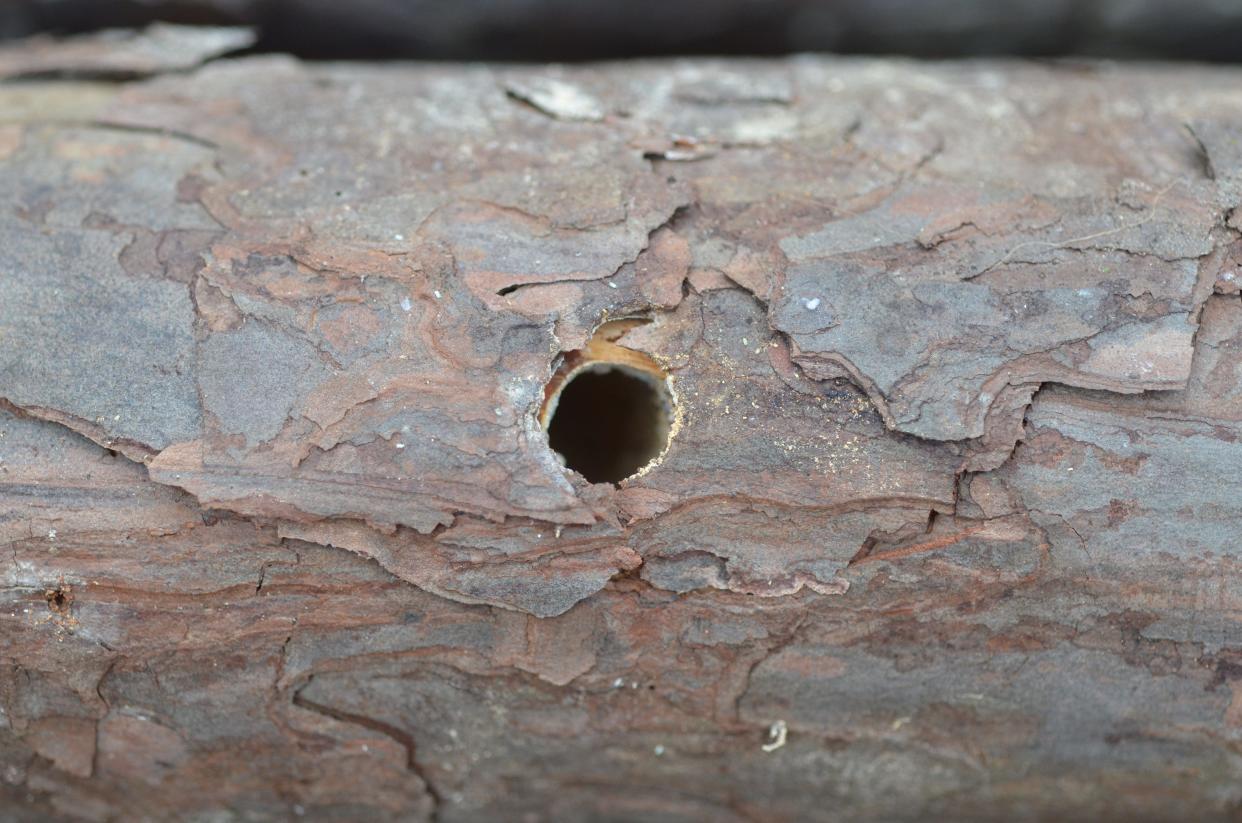Tallahassee's cold January has taken hum out of winter, except for carpenter bees

The effects of January’s cold weather in Leon County have many characteristics. In addition to the realistic possibility of the occasional subfreezing thermometer readings and frosts, there is the quiet.
Still the rumble of vehicle traffic remains, the whine of the occasional jet passing overheard and the sonic clutter in populated areas, but in the forests and pastures there is a seasonal silence which occurs in north Florida.
Unlike south Florida which remains in a constant state of commotion propelled by the usually consistent warm to hot weather, north Florida has a seasonal repose. Aside from barred owls and coyotes hunting, cold nights are devoid of the clamor present during summer’s humid evenings.
Even the days have an unobtrusive audible quality. Frequently, but not always, missing is the buzz of flying insects so common to warm weather.
Distinct from migratory butterflies, and visitors up north, these denizens of the mini-aerial realm have not flown south for the winter. They are still in north Florida navigating the oscillating temperatures and making sporadic forays in search of food.
One intrepid insect is Xylocopa virginica, as one local species of large carpenter bee is known scientifically. It is one of more than 400 species this genus with member worldwide. Almost all their members build nest by burrowing into dead wood.
Bumblebees and carpenter bees are very close in behavior, coloration and size. The easiest way to differentiate these insects is by their abdomen, the body segment furthest from the head.
Bumblebees have an abdomen thickly covered in fine hairs. Carpenter bees lack the fine hairs and have a shiny abdomen.
In the wilds of Panhandle Florida this usually means deadfall timber of almost any sort is a potential spring nesting site. Unfortunately, in the areas which include human structures this includes untreated wooden lumber and siding.
Unlike European Honeybees, the carpenter bees are labeled as solitary bees. There may, however, be several nests in close proximity.
Nests are composed of a single female which lays eggs in a segmented tubular nest. The nest’s openings are a nearly perfect 5/8 inch (16 mm) hole.
Each nest has only a single opening, but usually multiple tunnels will branch off the main passage if the space is available. Smaller branches or boards will have a single passageway with eggs at the end opposite the opening.
These bees do not eat the wood removed to create the nest channels. They will use the excavated wood pulp for construction material to complete their nest, but sawdust is commonly found beneath the opening of new nest.
Like other local bees, they subsist on pollen and nectar. While they are not honey producers like the European Honeybees, they do use the same tactic of stored resources for survival during the winter.
On warmer winter days they will also be seen collecting pollen from winter blooming flowers. Camellias, both sasanquas and Japonicas, are a local favorite of winter foraging insects.
The carpenter bees currently flying are mostly hatchlings from late summer 2021. At that same time 2020’s bees mostly died, with the exception of a few females. Only the genetically superior endure.
Curiously, the X virginica species of carpenter bees have a habit of reusing the previous year’s nests, in addition to boring new nests in available wood. This practice provides homeowners an opportunity to help control the population of this potentially destructive insect during the winter by eliminating existing sites.
This endemic bug will reactivate with vigor next spring, but at least they will have to make the effort to establish new nest. This gives astute building owners a chance to respond to the auditory evidence, if not distracted by all the other insect noises.
To learn more about busy bees in Tallahassee, Fort Braden and Leon County, contact the nearest UF/IFAS County Extension Office or visit sfyl.ifas.ufl.edu. To read more stories by Les Harrison visit: Outdoorauthor.com and follow me on Facebook.
Les Harrison is a UF/IFAS Wakulla County Extension Agent Emeritus.
Never miss a story: Subscribe to the Tallahassee Democrat using the link at the top of the page.
This article originally appeared on Tallahassee Democrat: Hardy carpenter bees tough it out North Florida's winters

